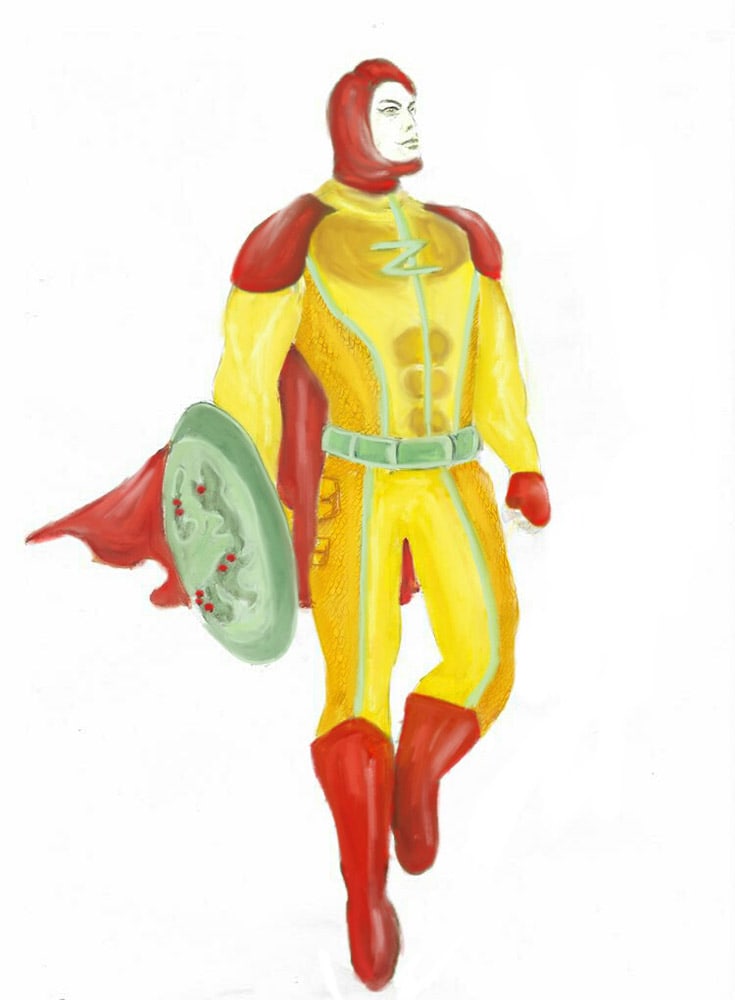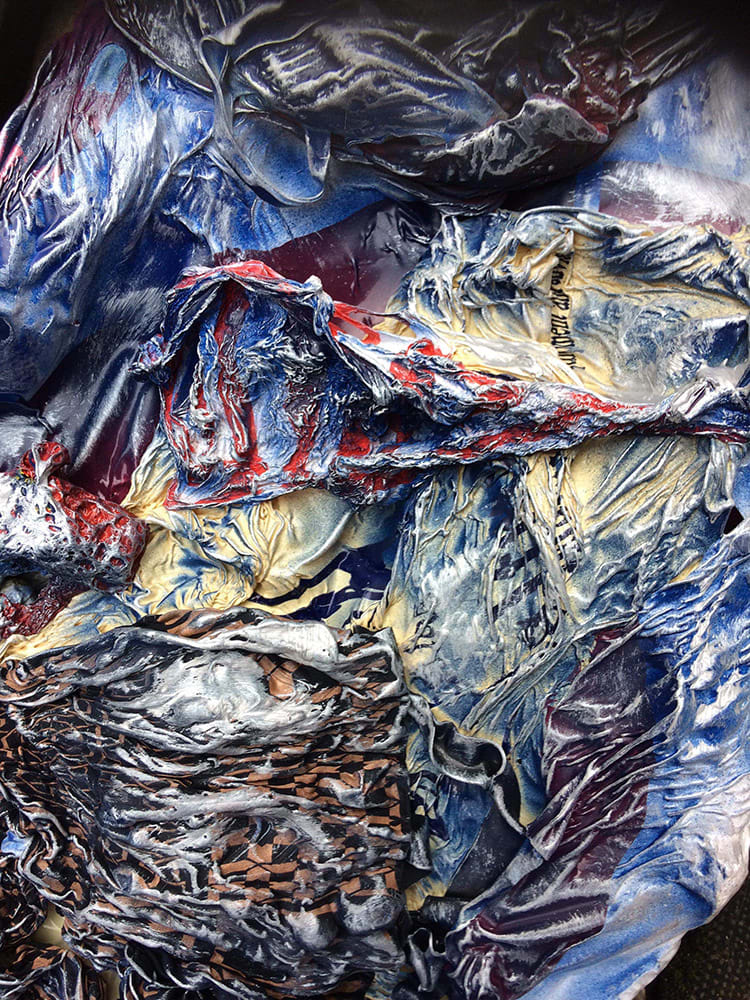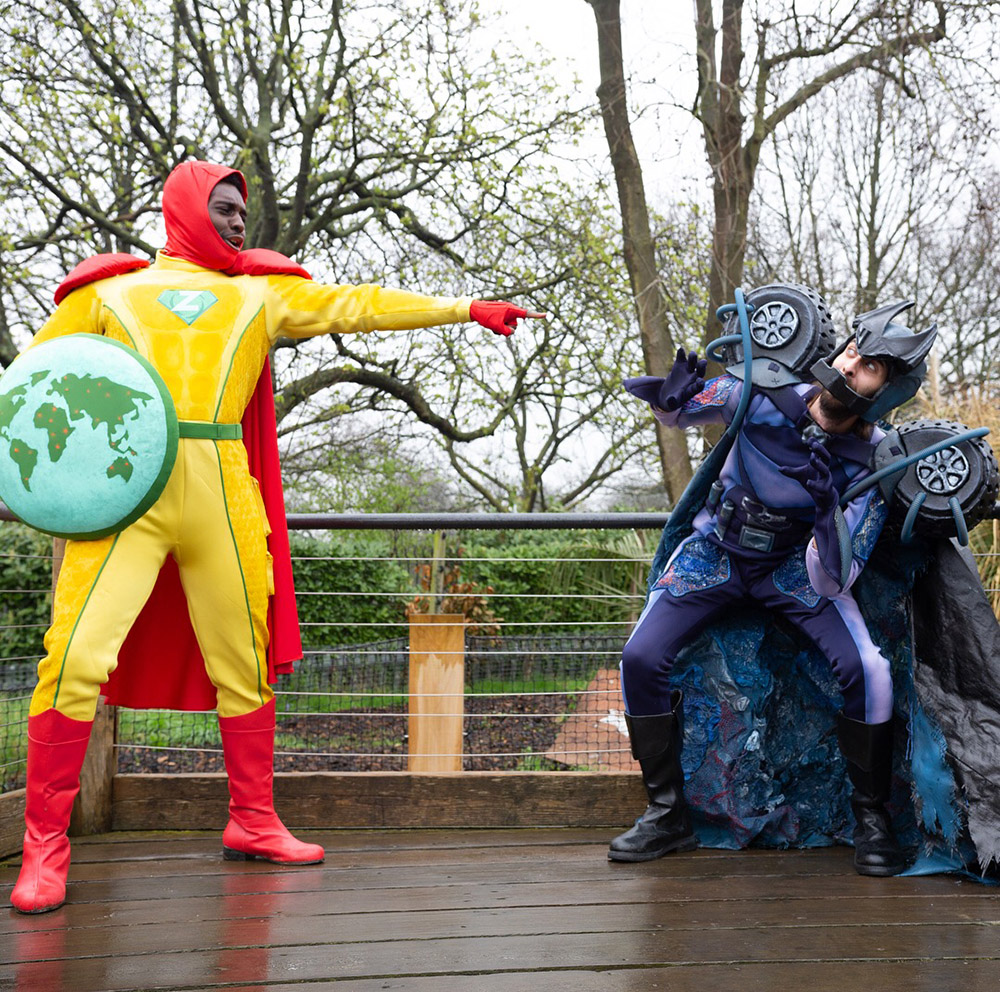For BA Costume students at Wimbledon College of Arts, our final unit in the second year is all about collaboration. During this unit, we’ve been encouraged to collaborate in lots of different ways, both within the college and externally.
The project I worked on was a fantastic example of this collaborative atmosphere. I worked with both BA Costume Design and BA Costume Interpretation students to create a series of costumes for ZSL London Zoo and Whipsnade Zoos. In February, ZSL sent the costume students a creative brief, asking for a pair of costumes to be designed and made for each zoo. The costumes were to be used for performances as part of an interactive event for children promoting recycling and the conservation of nature.
The zoos came up with a superhero character named Captain Z who represented saving the planet and protecting wildlife, and a super villain counterpart named Plastico, to embody single use plastic and the destruction of the environment. We began by assembling a team of designers and makers who were interested in the project, meeting to discuss what the project entailed and how we might approach it. We agreed to independently design costumes to the brief, then meet again with to combine elements we liked from each design into two finalised designs.

We also had to estimate what materials we would need to create the costumes, and how much this would cost. The representatives from the zoos hadn’t provided us with a set budget, so we estimated the costs and proposed our budget to them, which they agreed to provide. The money from the zoos was sent directly to the college’s finance office, through which we were able to access funds for our materials and travel costs.
A variety of materials went into the construction of these costumes. The group carefully chose fabrics and other materials that would best suit the characters and also be manageable to work with. The main body of each costume is a layered all-in-one fitted suit. The first layer is made from cotton Lycra, providing the actors with a comfortable, breathable fabric with enough stretch to move freely and easily. This layer also provided a base onto which we could sculpt the ideal “superhero” physique. Strips of wadding were carefully stitched onto the cotton Lycra to emphasise the muscles of the chest, arms and legs.
The next layer of each suit was made either of neoprene or thicker scuba fabric, which has more structure than Lycra but still has a good amount of stretch. The top layers were coloured, decorated, and textured to establish the characters. The team agreed on a colour palette of earthy, primary tones for Captain Z, mainly yellow with red and green accents. The outer panels of the suit are embroidered with a scale-like pattern with a fabric binder painted into the yellow neoprene to add more depth.
Captain Z also carries a green shield intended to look like the Earth, with LED lights that show where there are endangered species of animals on each continent. The shield cape, fingerless gloves and fitted balaclava Captain Z wears are all made of smooth stretch fabric, giving the hero a streamlined look with similar characteristics to that of classic comic book superheroes.

Meanwhile, Plastico’s silhouette is much more cumbersome and heavy. The colour palette for the supervillain is a combination of dull and dark colours, in stark contrast to the hero. We used black, navy, mauve and grey throughout the suit, as well as plastic panels of “litter” and heavy accessories to create the panto-villain look. Plastico’s many accessories, which include a cape, helmet, elbow length gloves, toothpaste tubes and shoulder pads that look like car tyres, all hint at Plastico’s wasteful habits. These accessories were made from a variety of materials, mainly old plastic bags and containers, and EVA foam covered with thermoplastic and paint.
The biggest obstacles we faced while completing this project were having to work around other term time commitments and the college closure. Our first deadline on 9 April fell in the middle of the Easter holidays, during which the college was closed for two weeks. Our solution was to transport the materials off-campus to a team member’s house so that we could continue working to meet the deadline.
Even though we were given permission to borrow sewing machines and mannequins from the costume studios, we were at a disadvantage in that we had no access to technician help over the holidays. This was a strengthening experience for the whole team as we navigated through the project and solved problems as a group. In the end, we were able to successfully construct the costumes ourselves and meet the deadline for the photoshoot.

The second deadline was making the next set of costumes for Whipsnade Zoo by 11 May. We were at an advantage for the second costumes because of our experience making the first two, and the later deadline meant that we could work exclusively from college and access all the facilities and receive help from technicians. However, the later deadline also meant that we were constructing these costumes during the new term, alongside other course work and external commitments. Once again, we worked collaboratively as a group, balancing everyone’s personal schedules and deadlines to achieve our goal.
The most significant lesson I learned throughout this project was the importance of communication. At each meeting during the initial planning stages of the project, there were at least three or four team members present, and we recorded important information from our meetings to share on our group chat with anyone who was unable to attend. Specific communication of instructions became essential when handing over a particular job to another person, especially when replicating the costumes.
Overall, this collaborative project was an exciting venture that allowed everyone involved to learn new skills and gain new contacts. I believe that all the problem solving, communication and teamwork paid off, as can be seen in the final photoshoot for ZSL London Zoo.
You can see more of Chase’s work by following her on Instagram.
Find out more about studying Costume for Theatre and Screen at Wimbledon College of Arts.

